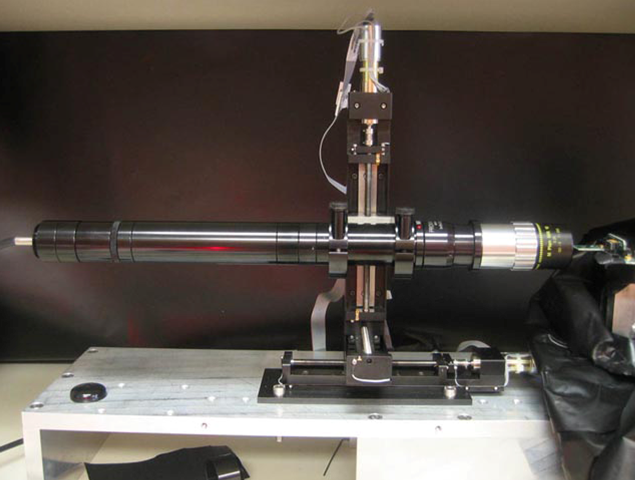
| Spot-O-Matic
System for the Characterization of SNAP Photodetectors Nathaniel Barron University of Michigan Physics REU Program Advisor: Wolfgang Lorenzon |
|
| Overview: | |
| The Spot-O-Matic began as an REU summer project during the summer of 2003. I continued to work on it through the school year, and again during the 2004 REU program. Since its beginning as a summer undergraduate project, it has become a functional, unique system designed for testing the detectors to be used on the SNAP telescope. | |
| What is SNAP? | |
| SNAP is a space-based telescope intended for launch in 2012. Its purpose is to map the expansion history of the universe by looking at type IA supernovae. With a much wider survey area than existing telescopes, and the ability to look at supernovae at higher redshifts, SNAP hopes to shed light onto the nature of the mysterious Dark Energy. | |
| The Spot-O-Matic: | |
| The Spot-O-Matic is designed to test the NIR and visible detectors that will make up the focal plane of the SNAP telescope. The SNAP telescope utilizes 36 HgCdTel NIR detectors, as well as 36 visible CCDs. To obtain the kind of precision and accuracy required by SNAP, the responsivity of these detectors must accurately mapped, with resolution a fraction the size of a single pixel. With a pixel size of 20 Ám square, this is no easy task. The Spot-O-Matic focuses light into a spot only a few Ám across, which is then projected onto the surface of the detector, inside of a single pixel. It is mounted on a precision motorized stage to allow this spot to be moved across the surface of the detector, probing the interior of a single pixel. | |
| Results: | |
| As of August 2004, the Spot-O-Matic has been used to characterize the response of a single pixel of a Raytheon InGaAs detector. A map of this response vs. position is shown below. The Spot-O-Matic is now fully operational, and further tests of new devices will follow. | |

Spot-O-Matic mounted on motorized stage
![]()
Pixel response vs. position from a scan of a single pixel